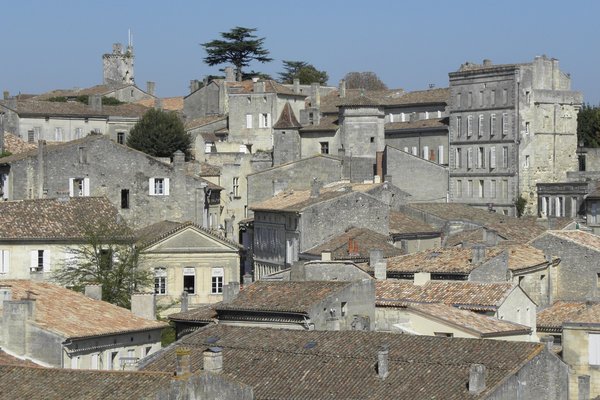France
Saint-Emilion
The Jurisdiction of Saint-Emilion is a historic vineyard landscape that is still in use.
The Romans introduced viticulture here, and the industry further developed during the Middle Ages and the Renaissance. From the latter period, impressive “chateaux” remained as well as villages with modest stone houses for the workers. Further historic monuments included the Pierrefitte menhir and the Monolithic Church and the Collegiate Church of Saint-Emillion.
Community Perspective: St. Emilion is a pleasant town to visit, however very touristy. They even have a small tourist train that provides a glimpse of the vineyard landscape. Ian checked out some of its vineyards that produce high-quality red wines and their chateaux.
Site Info
Official Information
- Full Name
- Jurisdiction of Saint-Emilion (ID: 932)
- Country
- France
- Status
-
Inscribed 1999
Site history
History of Saint-Emilion
- 1999: Inscribed
- Inscribed
- Type
- Cultural
- Criteria
- iii
- iv
Links
- UNESCO
- whc.unesco.org
- Official
-
- saint-emilion-tourisme.com — St. Emilion Tourisme
All Links
UNESCO.org
- whc.unesco.org — whc.unesco.org/
Official Website
- saint-emilion-tourisme.com — St. Emilion Tourisme
News Article
- Nov. 19, 2011 medievalists.net — Saint-Emillion sells off 14th century cloister to pay debts
Community Information
- Community Category
- Human activity: Agriculture
- Cultural Landscape: Continuing
Travel Information
Aquitania hotspot
Recent Connections
-
Significant Follies
-
Perfect Inscriptions
1999 -
Megalithism
Menhir de PeyrefitteSee fr.wikipedia.or…
Connections of Saint-Emilion
- Trivia
-
-
Built or owned by British
"When Eleanor of Aquitaine married Henry Plantagenet (later Henry II of England), the town of Saint-Emilion, by then fortified, became part of the English kingdom, along with all Guyenne. King John granted the town full liberties in 1199." (AB ev) -
Tour de France
Tour de France 2021, Stage 20
-
- History
-
-
Neolithic age
Menhir de PeyrefitteSee fr.wikipedia.org
-
Megalithism
Menhir de PeyrefitteSee fr.wikipedia.org
-
- Architecture
-
-
Rock Cut Architecture
Monolithic church, carved from a limestone cliff
-
- World Heritage Process
-
-
Perfect Inscriptions
1999
-
- Religion and Belief
-
-
Benedictines
Built the Monolithic Church
-
- Human Activity
- Constructions
- WHS on Other Lists
-
-
World Monuments Watch (past)
Saint-Emilion Monolithic Church (1996)
-
- Timeline
-
-
Built in the 3rd century
"With the prosperity of Burdigala (Bordeaux), Valerius Probus used his legions to fell the Cumbris forest in AD 275 BC (sic) and created the first vineyards by grafting new varieties of grape on the Vitis biturica that grew naturally in the region."
-
- WHS Hotspots
-
-
Aquitania hotspot
By train and a bit of walking in about an hour
-
- WHS Names
-
-
Named after a local Christian saint
Wiki: "The town was named after the monk ?milion, a travelling confessor, who settled in a hermitage carved into the rock there in the 8th century. It was the monks who followed him that started up the commercial wine production in the area." -
Named after individual people
Named after the monk Emilion, a travelling confessor, who settled in a hermitage carved into the rock there in the 8th century.
-
News
- medievalists.net 11/19/2011
- Saint-Emillion sells off 14th cent…
Recent Visitors
Visitors of Saint-Emilion
- Alberto Rodriguez Gutierrez
- Alexander Barabanov
- Alexander Lehmann
- alicemears
- Alikander99
- Alvaro1404
- A. Mehmet Haksever
- Ammon Watkins
- AndreaTLV
- Angela Vandyck
- Anna Wludarska
- Antonio J.
- Argo
- arnaugir
- Aspasia
- Atila Ege
- AustralLights
- Bauchat
- BaziFettehenne
- BenReeve
- Bin
- Brendan Carroll
- CampbellME
- Caspar
- Cezar Grozavu
- cflw
- Chantal den Haan
- chenboada
- Cheryl
- Christian Wagner
- Christine
- Claire Bradshaw
- ClaraHH
- Clyde
- Crinion
- Cristina Erba
- Csaba Nováczky
- Cyberczar
- Daniela Hohmann
- Daniel Chazad
- Daniel R-F
- Dan Pettigrew
- David Berlanda
- Dennis Nicklaus
- Dimitar Krastev
- Don Irwin
- Dwight Zehuan Xiao
- Echwel
- Elaine McArdle
- Elia Vettorato
- Ellen Nielsen
- Els Slots
- Emilia
- Erik Jelinek
- Errol Neo
- Eva Kisgyorgy
- fabi-ddorf
- Fan Yibo
- Farinelli
- Fede1203
- Feldhase
- Femke Roos
- Filip Murlak
- Frederik Dawson
- Garry Jackson
- GeorgeIng61
- GerhardM
- Gernot
- giloudepuertorico
- Harald T.
- Harry Mitsidis
- Hasco
- Hdhuntphotography
- Hubert
- Iain Jackson
- Ian Cade
- Ivan Rucek
- Jaakkotoivanen
- Jakob F.
- James F
- Janina Lehmann
- Janos
- Jan-Willem
- Jarek Pokrzywnicki
- Jarrod_Byham
- Jasam
- Jean Lecaillon
- Jeanne OGrady
- Jens
- Jezza
- Joel on the Road
- Jonas Kremer
- Jonas Martinsson
- jonathanfr
- Joyce van Soest
- KarenBMoore
- Karito Vies
- KeithBailey
- Ken DJ
- Kjlauer
- Klaus Freisinger
- Laetitia Yin
- Lara Adler
- Lars Bogstad
- Liamps91
- Loic Pedras
- Lucas Del Puppo
- Ludvan
- Luis Filipe Gaspar
- Maciej Gil
- Małgosia Łupicka
- Manuelfunk
- Marinemajor
- Martina Rúčková
- Mathijs
- Matthewsharris
- MaxHeAnouBen
- MaYumin
- MH
- michaelsballard
- Michael Turtle
- Mikko
- Mikko Syrjä
- Milan Jirasek
- Monica Tasciotti
- montgomw
- MoPython
- Naim Y
- nan
- napalm
- Niall Sclater
- Nick M
- Nihal Ege
- nikolamus
- Nikolay Marinov
- Patrik
- Paul Schofield
- PeterH
- Peter Lööv
- Philipp Leu
- Philipp Peterer
- Pink Bunny
- Piotr Wasil
- Potsdamer
- Qin Xie
- Rafał Kałczuga
- RainbowMarbles
- Randi Thomsen
- reddargon
- RJPTravel
- Roel Sterken
- Roger Ourset
- Roman Bruehwiler
- Rubbie
- Sabrina Liebehentschel
- Sandmann15
- Sandra!
- saraleonela
- Schnitzel
- scubarrie
- Sergio Arjona
- Shandos Cleaver
- Slavi
- Solivagant
- Sorel Americo
- Stanislaw Warwas
- stephanvermeulen
- Stijn
- streliorsi
- Svein Elias
- Szucs Tamas
- Tammy Gouldstone
- Taotao Chen
- Tarquinio_Superbo
- Thomas Buechler
- Thomas van der Walt
- Tim Allen
- TimPick
- Tinamu
- triath
- Truls Brekke
- Tsunami
- Vanessa Buechler
- Van Hung
- vino4vino
- voyager
- Walter
- WILLIAM RICH
- Wimmy
- Wojciech Fedoruk
- Wo_ko
- wrung24
- Xiquinho Silva
- Zhenjun Liu
- Zoë Sheng
Community Reviews
Show full reviews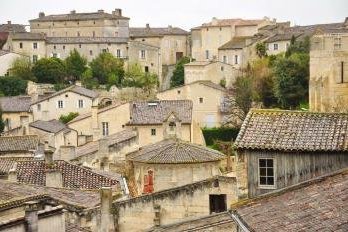
When we planned the trip, my friends and I already expected that our visit to Saint Emilion must be not enjoyable because visiting in March, there is almost nothing in the vineyards, and because two of our group don’t drink alcohol, and one has to be a driver, so visiting chateaux for wine testing for just one person in the group seem to be pointless. Anyway, we still kept Saint Emilion in our plan expecting good weather and great view from this medieval town; however, when we arrived the town, there was shower, and it was really cold. We decided to look around the town which was quite prosperous and lovely but really quiet as all the shops were closed and no one came out in such bad weather. My friends also angrily cursed the expensive parking fee so that we decided to park our car outside the town.
We roamed around the wet and quiet town, luckily that the town was great. Many buildings were beautiful, and many small alleys were really pretty with flower and ivy. We saw the famous Monolithic Church, which was interesting and the Tour du Roy, an old tower, a really nice place for photograph where we could get a perfect view of the whole town. We went to a recommended spot to see the view of countless tiled roof which was really nice indeed. During our visit the only shop that still opened were the wine shops. When we looked …
Keep reading 0 comments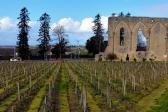
I visited this WHS in March 2014. It is a short drive from Bordeaux and easily accessible from the highway or else through very good but small roads meandering through the surrounding viticulture landscape. Unfortunately at this time of year the vines were dormant so no grapes or green leaves were to be seen. Yet the never-ending stretches of monoculture fields dedicated to wine-making can be appreciated as well as a couple of stops to some of the great Saint-Emilion wineries. Wine-tasting is a must in this region as a whole but St. Emilion is a special place for wine connoisseurs where you can feast your taste-buds with the red St. Emilion Grand Cru wine directly from the Chateau cellars. The medieval town of St. Emilion has a unique landmark - Europe's largest monolithic church - this rock-hewn church deserves a visit. Nearby, there are two magnificent cloisters. One in the Collegiate Church and another in the Cordeliers Wine Bar. However, the highlight of my visit was wandering around the narrow cobblestoned streets and enjoying the typical St. Emilion macarons from the tiny shops scattered throughout the town. To me this WHS does not offer much in terms of OUV especially when compared to other inscribed sites of such as Vezelay, Reims, the Route of Santiago de Compostela in France or other medieval towns in Europe.
Keep reading 0 comments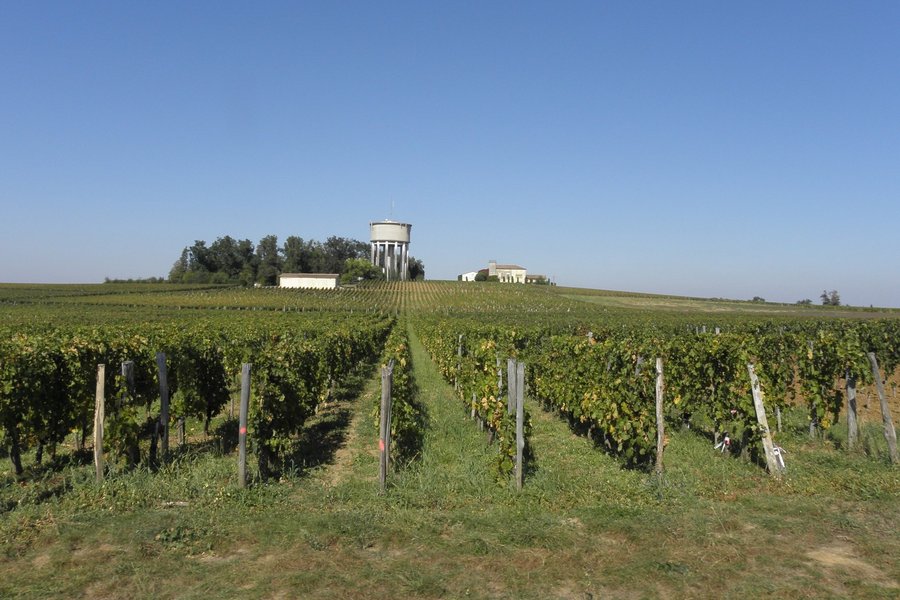
St. Emilion is one of France's most famous wine-growing towns, and the centre of the Bordeaux appellation. Coming by train from Bordeaux, you can see the vineyards stretching as far as the eye can see. The station is about a 20-minute walk from the village. Apart from countless wineries and wine shops, St. Emilion has many interesting historic features, including the unique Monolithic Church, which is almost totally underground. It can only be visited on a guided tour, though (the guide said that only 20% of visitors to the village take a tour of its most famous sight; the other 80% just come for the wine). A good way to explore the surrounding vineyards and chateaux is the small tourist train, whch also gives some useful historic infos. St. Emilion is also located along the Way of St. James, but doesn't seem to be included in the WH site (even though many other French WH sites are).
Keep reading 0 comments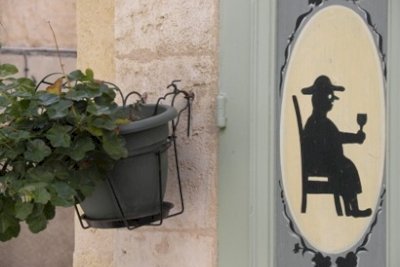
We visited Saint-Emillion on a day trip from Bordeaux. Trains leave only about 5 times a day, and we found that the 10.40 departure suited us best. The train takes just over half an hour. From the tiny railway station in Saint-Emillion a walk of about 20 minutes is required to get to the city center. This walk actually provided us with our first photo opportunities of the famous vineyards, so it was no hassle at all.
The town of Saint-Emilion likes its tourist Euro, so almost every building in the old city center is converted into a shop, a wine bar, or a restaurant. Most visitors seem to come there on bus tours or by their own car. The medieval streets are bustling with people, and as we were blessed by extremely sunny and warm weather for this time of year the terraces were crowded. We enjoyed a great meal of mussels and french fries there – such pleasures is what a mini-break is all about.
The two major monuments of Saint-Emilion are its churches: the weird Monolithic Church and the exuberant Collegiate Church. The latter has lots of colourful stained glass windows, through which the sunlight shines to illuminate the interior.
We visited the surrounding vineyard landscape by the little tourist train that loops through it. The fields were pretty dry already, so I was not as impressed by the scenery as I was 8 weeks ago when I visited the Lavaux vineyard terraces in …
Keep reading 0 comments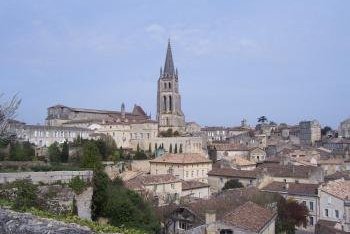
I really enjoyed this visit, I spent a couple of hours aimless wandering the hilly cobbled streets in the centre of the medieval town, poking my head into the smattering of interesting buildings in the centre. Perhaps I enjoyed it so much because a few hours before-hand I had been in London; therefore making my bucolic picnic, next to the gentle trickle of a fountain seem even more relaxing.
I then headed off to explore a few of the chateau in the surrounding fields. I loved just aimlessly driving through the twisting lanes between the almost endless vineyards. Virtually the entirety of the jurisdiction is planted with vines making this one of the most intense grape growing regions in one of Frances main wine regions. St Emilion AOC is located in the wider Bordeaux wine region, and is famous for producing high quality red wines mostly based on the Merlot, Cabernet France and Cabernet Sauvignon grape variety. St Emilion AOC itself is broken down into several classifications itself, with two estates being awarded the highest accolade Premier grand cru classé A. I made it a bit of a mission to hunt out these two super vineyards. The first, Château Ausone, was pretty simple as it is right next to the town of St Emilion. I then drove on to Château Cheval Blanc knowing that the vineyards next to the road produce some of the most expensive bottles of wine in the world. The intense classification system takes into account the …
Keep reading 0 comments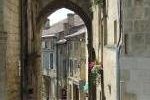
Reaching St Emilion is possible by bus or train from Libourne. I travelled by train to a station 2km south, downhill from the town. The road to the town was lined each side with huge vinyards. After passing through the Porte Bouqueyre it was easy to realise this was a special place. Besides all the caveaux for wine tasting there were several interesting buildings like the monolithic church, the Kings Tower and the Collegiate church.
I continued to the top end of the village where the buses stop. From here there were extensive views of the vinyards all around.
Keep reading 0 comments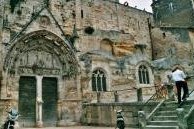
In our trip to France we have been to the beautiful village of Saint-Émilion, the biggest of the jurisdiction, that is 7846 ha big, includes eight communes and is situated on the pilgrimage route to Santiago de Compostela; its boundaries were established during the English rule, in the 12th century, by John Lackland, king of England, and coincide also with the Barbanne, a tributary of the Isle, and the Dordogne. The relief has a stratum of limestone defined by shelves that crisscross the landscape. This disappears to the north, along with the sandstone that it overlies, and is replaced by a mixture of clayey sands and gravels, dipping towards the south. There are two slopes: one is gentle and cut by valleys, the other steeply plunging in the Dordogne valley and forming also concave valleys, in one of which is Saint-Émilion. The climate is suitable for the viticulture (the jurisdiction is famous for this), that was introduced by the Romans and intensified in the Middle Age, so the landscape has a monoculture of vineyards, that occupy 5400 ha (the 67,5 % of the area). The small village of Saint-Émilion, situated on two limestone hills, has nice squares and stone houses in small groups especially of the first half of the 19th century, that have no more that two storeys and that were used for the vineyards workers. The large rectangular wine storehouses are made of stone or a mixture of brick and stone with tiled double-pitched roofs; they began to …
Keep reading 0 comments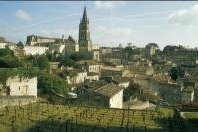
The “Jurisdiction of St-Emilion” is in effect what is called a “cultural landscape” in other WHS inscriptions. It is a historic landscape which has been developed over many centuries for the production of wine.
We found this an interesting concept and one which is important enough within French history and culture to justify its inscription. Though how “unique” the “Jurisdiction” is among French wine growing areas I don’t know – but they did get in first! This mediaeval status, granted in the 12th century and still pursued with accompanying traditional rites, has been used as a significant reason under criterion iv for choosing St-Emelion – as long as France doesn’t start inscribing wine regions as frequently as it inscribes religious buildings! You think I joke? In fact France already has 2 more wine growing areas as sites on its Tentative List – Vignoble Champenois and Cotes de Nuits de Beaune. Other countries have their claims too - Hungary has already had its Tokaji Wine Region Cultural Landscape inscribed and Spain has a “Cultural Route of the Vine" in its tentative list!
St-Emilion itself is very pleasant and very “French” medieval town with ramparts, narrow streets, Chateau and Market Place . The “shopping opportunities” are exploited to the full and at times you feel that you are walking through an enormous outdoor “wine hypermarket”! The little Museum of Viticulture supports this selling effort but is interesting enough – I particularly remember an enormous wall sized map showing every field in the …
Keep reading 0 comments
